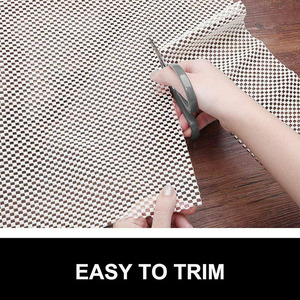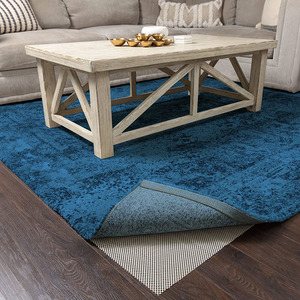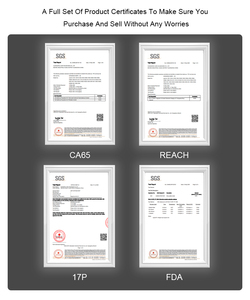
All categories
Featured selections
Trade Assurance
Buyer Central
Help Center
Get the app
Become a supplier

(1134 products available)

















































Carpet underlay suppliers sell different types of carpet underlays. Each type is designed for specific needs and requirements. Here are some of the most common ones:
Foam carpet underlay
Foam underlay is one of the most common types of carpet underlay. It is made from polyurethane foam, which makes it lightweight and soft. The underlay is popular for residential use because it offers a good balance of comfort and support. It is also affordable. Foam underlay is available in different densities. Higher density options offer more support for heavy foot traffic areas like living rooms. Lower density options are softer and more comfortable for bedrooms. The foam underlay also has a moisture barrier. This prevents moisture damage to the carpet and extends its lifespan.
Felt carpet underlay
Felt underlay is an old-school classic. It is made from recycled fibers like wool, polyester, and jute. The recycled materials make it eco-friendly. It is also very durable and offers excellent support. Felt underlay comes in two types: flat and crumb. Flat felt underlay is smooth and thin. It is used when the carpet pile is close to the carpet gripper. Crumb felt underlay has a fibrous structure. It is thicker and used when extra cushioning is needed. The underlay is also popular for underfloor heating systems.
Crum carpet underlay
Crum underlay is made from recycled materials. It is a fibrous material mixed with latex to form a crumbly texture. The underlay is firm and offers support for the carpet. It has good sound and thermal insulation properties. The underlay is also popular for luxury carpets. It prolongs the lifespan of the carpet and offers better comfort. Like felt underlay, it is also used for underfloor heating.
Rubber carpet underlay
Rubber underlay is made from natural or synthetic rubber. It is dense, heavy, and durable. The underlay offers excellent support for the carpet. It also absorbs impact and reduces foot noise. Rubber underlay is popular for high-traffic areas like hallways and offices. It can withstand heavy usage for a long time. The underlay is also resistant to moisture, which prevents the growth of mold and mildew.
Other specialized carpet underlays
There are many other specialized carpet underlays. They are designed for specific purposes and requirements. Memory foam underlay is made from viscoelastic foam. It offers a soft, pillowy feel and conforms to the body. It is popular for bedrooms. High-density foam underlay has a firmer feel and is more durable. It is used for commercial spaces. It can withstand heavy traffic. Enterprise underlay is made from a combination of materials. It offers a balance of comfort, support, and durability.
Carpet underlay is a crucial part of any carpet installation. It is the extra layer placed between the carpet and floor. It plays an important role in enhancing the functionality and longevity of the carpet.
When buying carpet pads, it is important to pay attention to the features listed below.
There are many scenarios in which carpet underlay is used. These include:
Residential carpet installation
Carpet overlays are commonly used in residential homes. The carpet underlay provides extra cushioning and improves the comfort of people walking on the carpeted area. It also prolongs the life of the carpet and makes it easier to walk on.
Home theaters
Home theaters and media rooms use carpet underlay to block sound and ensure that noise is not transmitted to other rooms. The underlay also blocks sound from outside to the home theater, ensuring a quiet environment to enjoy movies and music. It also ensures maximum comfort while seated and makes the space feel warm and cozy.
Commercial offices
Offices use carpet underlay to reduce noise from one office to another. This ensures that conversations and meetings are not disturbed by other sounds. The underlay also makes the carpets in the office space last longer and makes walking around the office more comfortable. It also needs little maintenance since it is easy to clean.
Hospitality industry
Hotels, restaurants, and resorts use carpet underlay to make their spaces feel warm and welcoming. The underlay helps the carpets last a long time and ensures that guests enjoy walking around the space. It also makes spaces like banquet halls and conference rooms feel quiet and peaceful.
Healthcare facilities
Hospitals, clinics, and nursing homes use carpet underlay to ensure that patients and visitors do not hear a lot of sounds from other rooms. This makes for a more private and peaceful experience. The underlay also makes it easier for people to walk around the facility on the carpets and keep the space clean.
Retirement homes and assisted living facilities
These facilities use carpet underlay to ensure that residents are comfortable and do not hear many sounds from other rooms or spaces. This gives them a feeling of privacy and peace. It also helps residents who may have mobility issues feel more comfortable walking around the space.
Choosing the right carpet underlay supplier requires careful consideration. Here are some factors to consider when choosing an underlay supplier:
Product Range
Investors should look for carpet underlay suppliers with various products. A supplier with different underlays for various applications shows they understand the market. Such a supplier will meet the needs of different customers.
Quality and Certifications
It is important to check the quality of the carpet underlays before placing bulk orders. Buyers should look for suppliers who offer durable underlays with excellent performance. They can check reviews and testimonials to get insights on the underlay quality. Also, they can request to see the supplier's quality certifications. This shows the supplier's underlays have passed the required quality tests.
Customer Service
Excellent customer service is important when working with a carpet underlay supplier. Buyers should look for a supplier with a responsive and knowledgeable customer service team. This will ensure any issues are resolved quickly. They can check the supplier's customer service by sending an email and checking how fast they respond.
Delivery Time and Logistics
Investors should check the delivery time and logistics before choosing a supplier. They can request a delivery schedule to see how long it will take to receive the underlays. If they have a large project that needs to be completed within a specific timeframe, they should communicate that to the supplier. Apart from delivery time, they should also check the logistics. A supplier with efficient logistics will deliver quality products on time.
Pricing and Payment Terms
Pricing is an important factor to consider when choosing a carpet underlay supplier. Buyers should compare the prices of different suppliers to find one that fits their budget. They should also check the payment terms. Some suppliers offer flexible payment terms that are convenient for business owners.
Q1: What are the trends in carpet underlay that suppliers want to stock?
A1: Suppliers are looking for carpet underlay that is eco-friendly. They want products made from recycled materials or that can be recycled. They are also looking for underlay that has certifications. The certifications show that the underlay has good sound insulation and thermal properties. Moreover, suppliers are interested in products that have a good cushioning feel. They believe that a good cushioning feel improves the lifespan of the carpet.
Q2: What are the challenges carpet underlay suppliers face?
A2: One of the major challenges faced by carpet underlay suppliers is inconsistent supply. This is particularly true for sustainable materials. Due to this challenge, many suppliers have problems meeting the needs of their customers. They are also unable to take on large projects. Another challenge is the perception of underlays. Many people think that underlays are low value. This is due to the fact that they are not visible like carpets or rugs.
Q3: How can someone choose a carpet underlay supplier?
A3: When choosing a carpet underlay supplier, it is important to consider the quality of their products. Customers can ask for samples to evaluate the quality. They can also read reviews and testimonials from previous clients. If working for a large company, it is also possible to meet the supplier's representative to discuss concerns. Another thing to consider when choosing a supplier is their selection. It is important to work with a supplier who has different types and sizes of underlays. This will make it easy to get underlays for different projects.
Q4: Are carpet underlays in demand?
A4: Yes, carpet underlays are in demand. This demand is due to the fact that underlays extend the life of carpets. They also offer extra comfort and insulation.
Q5: How long do carpet underlays last?
A5: The carpet underlay can last up to 10 years or more. However, this will depend on the quality of the underlay, the type and how it has been installed.